Container garden design is an art form that allows you to create beautiful and functional outdoor spaces. Whether you have a small balcony or a large backyard, container gardening is a great way to add color, texture, and life to your home.
In this guide, we’ll cover everything you need to know about container garden design, from choosing the right containers and plants to creating stunning arrangements.
Container Selection
Choosing the right containers is crucial for successful container gardening. Consider the size, material, and aesthetic appeal to create a visually pleasing and functional garden.
Size and Material Considerations
- Size:Select containers that provide ample space for root growth and water retention. Overcrowding can lead to stunted growth and water stress.
- Material:Consider the durability, weight, and insulation properties of different materials. Plastic is lightweight and durable, ceramic provides insulation but can be heavy, and wood adds a natural touch but requires more maintenance.
Aesthetic Considerations
- Shape and Style:Containers come in various shapes, from classic pots to modern planters. Choose styles that complement your garden’s overall design.
- Color and Texture:The color and texture of containers can enhance or contrast the foliage and flowers. Consider using neutral tones for a subtle backdrop or bold hues for a statement piece.
Plant Selection
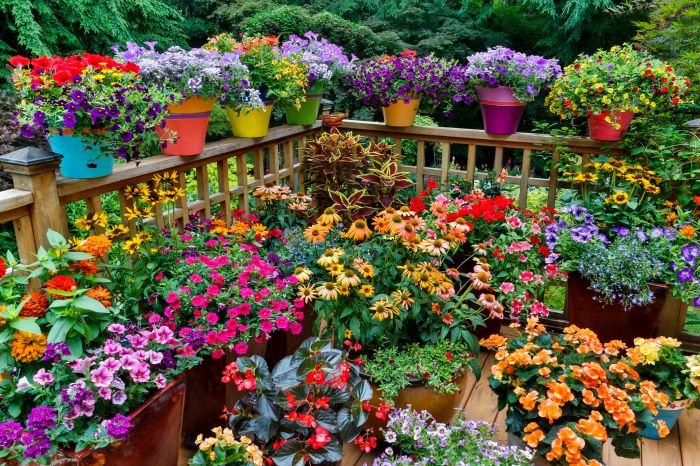
Choosing the right plants for your container garden is crucial for success. Consider factors like sunlight exposure, container size, and your personal preferences. Explore companion planting to maximize space and enhance plant growth.
Popular Plants for Containers
- Tomatoes:Compact varieties thrive in containers, providing fresh, homegrown tomatoes.
- Peppers:Colorful and flavorful peppers add spice and visual interest to containers.
- Cucumbers:Trellis varieties grow vertically, saving space and producing abundant cucumbers.
- Herbs:Basil, thyme, rosemary, and mint thrive in containers, adding flavor and aroma to your dishes.
- Strawberries:Hanging baskets or vertical trellises allow strawberries to cascade beautifully while producing sweet fruit.
Soil and Drainage
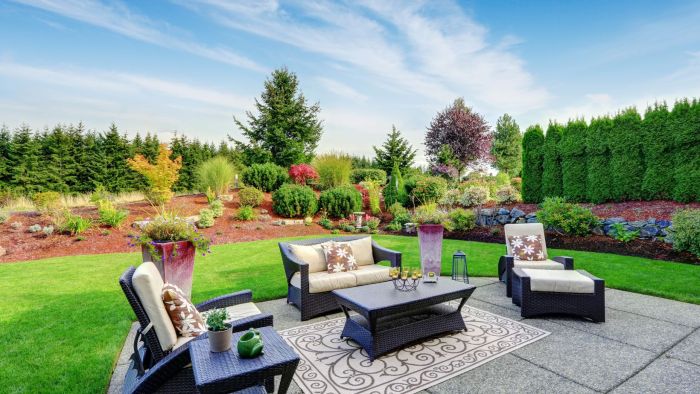
In container gardening, well-draining soil is crucial for plant health and growth. Poor drainage can lead to waterlogged roots, which can suffocate plants and promote root rot.
Creating a custom soil mix is essential for ensuring optimal drainage. A good mix should contain a combination of organic matter, such as compost or peat moss, and inorganic materials, such as perlite or vermiculite. Organic matter provides nutrients and improves water retention, while inorganic materials promote drainage and aeration.
Improving Drainage in Containers
- Choose containers with drainage holes:Ensure your containers have adequate drainage holes at the bottom to allow excess water to escape.
- Use a raised base:Place a layer of gravel or broken pottery shards at the bottom of the container to create a raised base that improves drainage.
- Add drainage material:Mix perlite or vermiculite into the soil to enhance drainage and prevent compaction.
Design Principles: Container Garden Design

The foundation of container garden design lies in understanding and applying basic design principles. These principles guide the arrangement and selection of plants and containers to create visually appealing and thriving gardens.
Color theory plays a crucial role in container design. Understanding the color wheel and how colors interact can enhance the visual impact of your garden. Complementary colors, such as blue and orange, create striking contrasts, while analogous colors, such as shades of purple, offer a harmonious blend.
Vertical Gardening
Vertical gardening is a space-saving technique that involves growing plants vertically, utilizing trellises, hanging baskets, or stacked containers. This method is ideal for small spaces or to add height and interest to existing gardens.
Cascading Displays
Cascading displays create a sense of movement and visual interest by using containers of different heights and shapes. Trailing plants, such as petunias or lobelia, spill over the edges of containers, creating a waterfall-like effect.
Maintenance
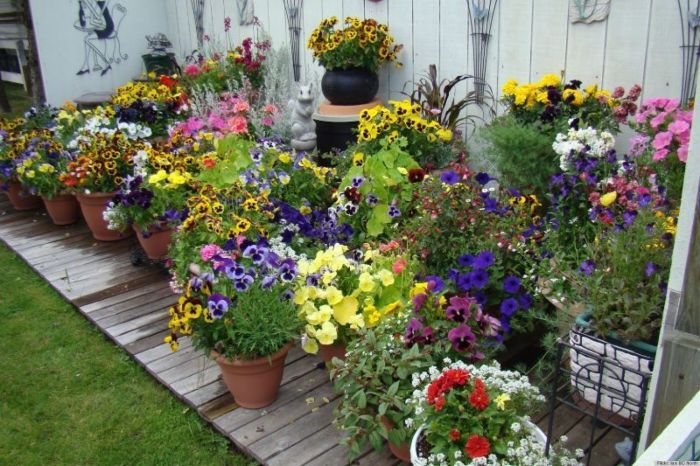
Maintaining a container garden is crucial for its success and the health of your plants. Establish a regular schedule for watering, fertilizing, and pruning, and be vigilant in monitoring for pests and diseases.
Container gardens require more frequent watering than in-ground gardens due to limited soil volume and faster water evaporation. Check the soil moisture regularly, especially during hot and dry weather. Water deeply and thoroughly, allowing the water to reach the roots.
Avoid overwatering, as it can lead to root rot.
Fertilizing
Fertilize container plants regularly to provide essential nutrients. Choose a balanced fertilizer formulated for container plants and follow the instructions on the label. Fertilize more frequently during the growing season and less often during the dormant season.
Pruning
Pruning container plants helps maintain their shape, promote new growth, and prevent overcrowding. Remove dead or damaged leaves and stems, and prune back overgrown plants to encourage bushier growth. Prune lightly during the growing season and more heavily during the dormant season.
Container garden design is a great way to add color and life to your backyard. Whether you have a small patio or a large yard, there are many different ways to create a beautiful container garden. With a little planning, you can create a container garden that will be the envy of your neighbors.
Common Pests and Diseases
Container gardens are susceptible to various pests and diseases. Aphids, spider mites, and whiteflies are common pests. Diseases like powdery mildew and root rot can also affect container plants. Regularly inspect your plants for signs of pests or diseases and treat them promptly with appropriate methods.
Creative Ideas
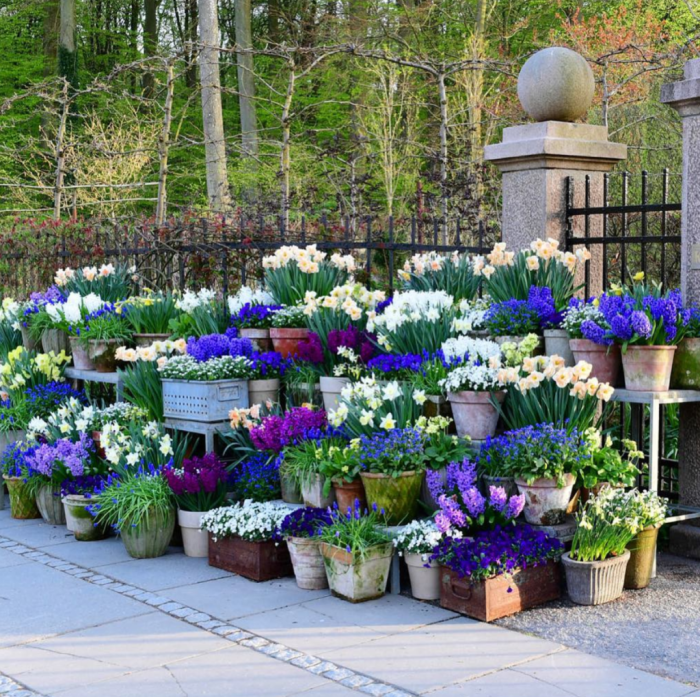
Container gardening offers endless possibilities for creativity and innovation. From vertical walls to living sculptures, the options are limited only by your imagination.
Vertical Gardens
Vertical gardens are a great way to maximize space and add a touch of greenery to any wall. You can use a variety of containers, such as hanging planters, wall-mounted pockets, or even old pallets, to create a vertical garden.
Living Sculptures
Living sculptures are another creative way to use containers. You can use plants of different sizes, shapes, and colors to create unique and eye-catching displays.
Edible Gardens
Container gardens are also a great way to grow your own food. You can grow a variety of fruits, vegetables, and herbs in containers, even if you have limited space.
Decorative Elements
In addition to plants, you can also use decorative elements to enhance the visual appeal of your container gardens. Trellises, wind chimes, and other decorative items can add a touch of personality and style.
HTML Table Structure
Organizing and presenting information in a clear and concise manner is crucial for effective communication. HTML tables provide a structured way to display data in rows and columns, making it easy for users to scan and understand the information.
In the context of container garden design, an HTML table can be used to organize and present information about various aspects of the design process. This table can include four responsive columns, each dedicated to a specific category of information.
Example Table
Here’s an example of an HTML table that can be used for container garden design:
| Plant Name | Container Material | Sun Exposure | Maintenance Requirements |
|---|---|---|---|
| Petunias | Plastic | Full sun | Water regularly, fertilize monthly |
| Begonias | Ceramic | Partial shade | Water sparingly, fertilize every other month |
| Geraniums | Terracotta | Full sun to partial shade | Water when soil is dry, fertilize every few weeks |
This table provides a clear and organized overview of the plant names, container materials, sun exposure requirements, and maintenance requirements for each plant. By using a table, the information is presented in a way that makes it easy for users to compare and contrast the different plants and make informed decisions about their container garden design.
Bullet Points for Procedures
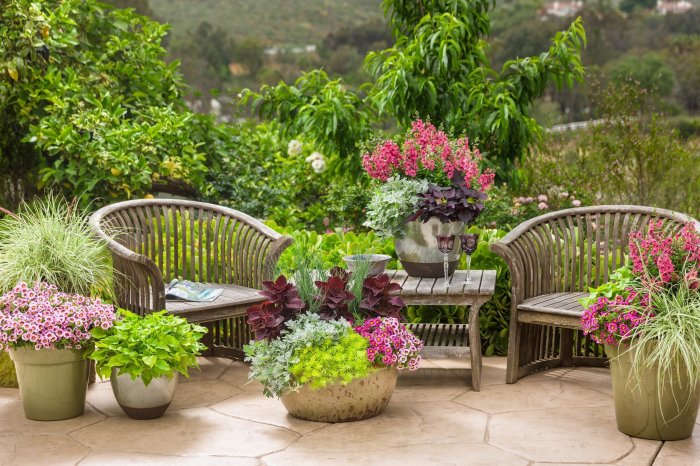
Designing and maintaining a container garden requires careful planning and attention to detail. Here are some key steps to guide you through the process:
Follow these steps to create a thriving container garden that adds beauty and freshness to your outdoor space.
Choosing Containers
- Select the right size:Choose containers that are large enough to accommodate the root systems of the plants you intend to grow. Small containers are suitable for shallow-rooted plants or herbs, while larger containers are necessary for deep-rooted vegetables or shrubs.
- Consider the material:Containers can be made from various materials such as plastic, ceramic, terracotta, or metal. Each material has its pros and cons. Plastic containers are lightweight and durable, ceramic containers are aesthetically pleasing but can be heavy, terracotta containers are porous and allow for good drainage, while metal containers can heat up quickly in the sun.
- Ensure proper drainage:Drainage holes are essential to prevent waterlogging and root rot. If the containers do not have drainage holes, you can drill them yourself or use a raised base to elevate the container and allow excess water to drain away.
- Avoid common mistakes:Do not overcrowd containers, as this can restrict root growth and lead to competition for nutrients. Also, avoid using containers that are too small or do not have adequate drainage.
Illustrations
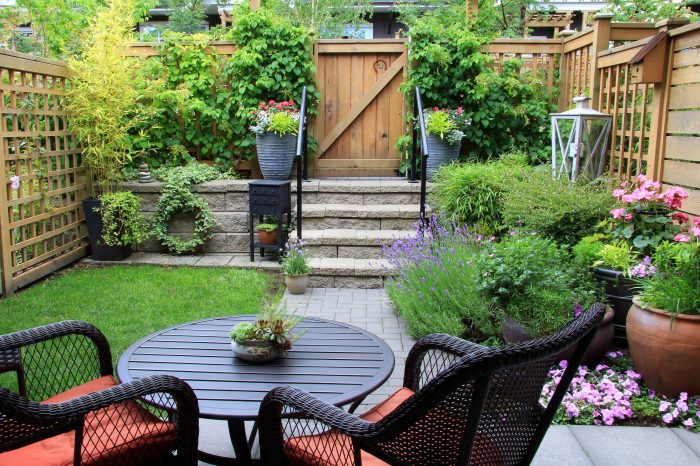
To enhance the reader’s understanding of container garden design, high-quality illustrations are essential. These illustrations should be visually appealing, clear, and informative.
The illustrations should depict various aspects of container gardening, such as:
Container Selection
- Different types of containers, including their materials, shapes, and sizes
- How to choose the right container for different plants and environments
Plant Selection
- Popular plants suitable for container gardening, including their size, growth habits, and flowering periods
- How to create harmonious plant combinations based on color, texture, and height
Soil and Drainage
- The importance of well-draining soil for container plants
- How to create a suitable potting mix for different plant types
Design Principles
- Basic design principles for creating visually appealing container arrangements
- How to use color, texture, and shape to create impact
Maintenance, Container garden design
- Essential maintenance tasks for container gardens, such as watering, fertilizing, and pest control
- How to keep container gardens healthy and vibrant throughout the growing season
Creative Ideas
- Innovative ideas for using containers in unique and stylish ways
- Examples of creative container arrangements that showcase different design concepts
Final Review

With a little planning and effort, you can create a container garden that is both beautiful and functional. So get started today and enjoy the beauty of nature right outside your door!